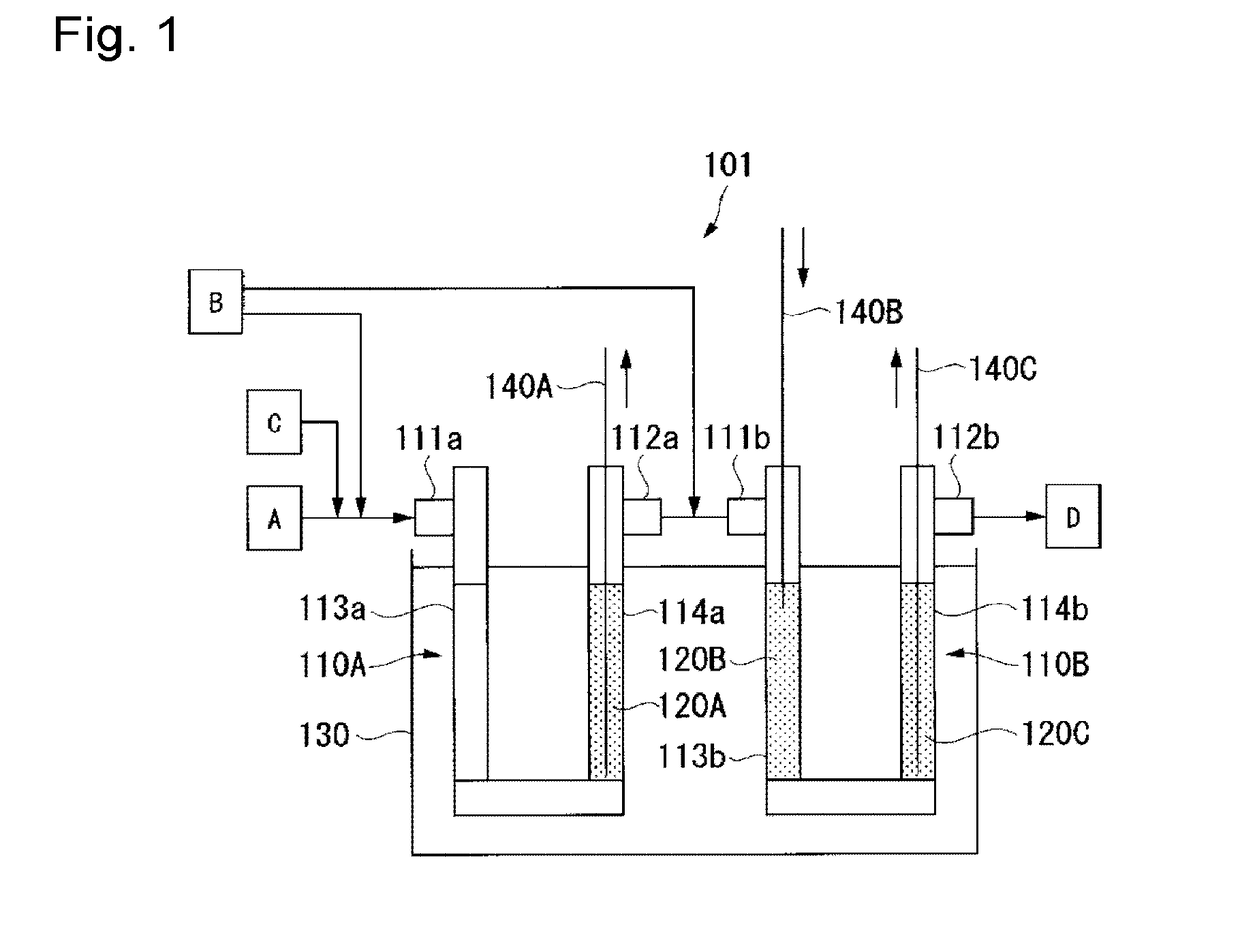Process for producing hydrofluoroolefin
- Summary
- Abstract
- Description
- Claims
- Application Information
AI Technical Summary
Benefits of technology
Problems solved by technology
Method used
Image
Examples
preparation example 1
Preparation of CFO-1214ya:
[0125]CFO-1214ya was prepared by the following method using AK225 as a reaction material.
[0126]Into a glass reactor having an internal capacity of 1L equipped with a Dimroth condenser cooled to 0° C., 3 g of TBAB as a phase transfer catalyst, 83 g (1.485 mol) of potassium hydroxide, 180 g of water and 609 g (3.0 mol) of AK225 were charged, gradually heated with stirring and reacted at 45° C. for 1 hour. Then, a reaction crude liquid separated into an organic phase and an aqueous phase was subjected to liquid separation, and the organic phase was subjected to distillation by a distillation column having a capacity of 1L and a number of theoretical plate of 10. As a result of distillation, 262 g (1.43 mol) of CFO-1214ya (boiling point: 45° C.) with a purity of 99.5% was obtained.
example 1
Preparation of HFO-1234yf:
[0127]For preparation of HFO-1234yf, a reaction apparatus 101 shown in FIG. 1 was used.
[0128]The reaction apparatus 101 comprises two reaction tubes 110A and 110B, and a salt bath 130 in which the tubes are dipped. The reaction tube 110A has two catalyst packing parts 113a and 114a on the inlet 111a side and on the outlet 112a side. Likewise, the reaction tube 110B has two catalyst packing parts 113b and 114b on the inlet 111b side and on the outlet 112b side. The outlet 112a of the reaction tube 110A and the inlet 111b of the reaction tube 110B are connected by piping.
[0129]As each of the reaction tubes 110A and 110B, a reaction tube made of Inconel (registered trademark) 600 having an inner diameter of 2.54 cm and a length of 100 cm was used. Further, using, as a carrier, activated carbon (BET specific surface area: 1,100 m2 / g), platinum and gold were made to be supported by a known method using chloroplatinic acid and gold chloride, followed by heat trea...
example 2
[0134]The reaction was carried out in the same manner as in Example 1 except that as the catalyst-supporting carrier, instead of Pd—Au / C, a palladium / cupper catalyst-supporting activated carbon (hereinafter referred to as “Pd—Cu / C”) having 0.5 part by mass of a palladium / copper alloy (palladium:copper=87:13 (mass ratio)) supported on 100 parts by mass of the same activated carbon as in Example 1 was used.
[0135]The produced gas (D) was analyzed by GC, whereupon the content of HFC-254eb was 6.3 vol %, and the content of HFO-1243zf based on HFO-1234yf was 0 vol ppm.
PUM
| Property | Measurement | Unit |
|---|---|---|
| Temperature | aaaaa | aaaaa |
| Time | aaaaa | aaaaa |
| Percent by mass | aaaaa | aaaaa |
Abstract
Description
Claims
Application Information
 Login to View More
Login to View More - R&D
- Intellectual Property
- Life Sciences
- Materials
- Tech Scout
- Unparalleled Data Quality
- Higher Quality Content
- 60% Fewer Hallucinations
Browse by: Latest US Patents, China's latest patents, Technical Efficacy Thesaurus, Application Domain, Technology Topic, Popular Technical Reports.
© 2025 PatSnap. All rights reserved.Legal|Privacy policy|Modern Slavery Act Transparency Statement|Sitemap|About US| Contact US: help@patsnap.com

